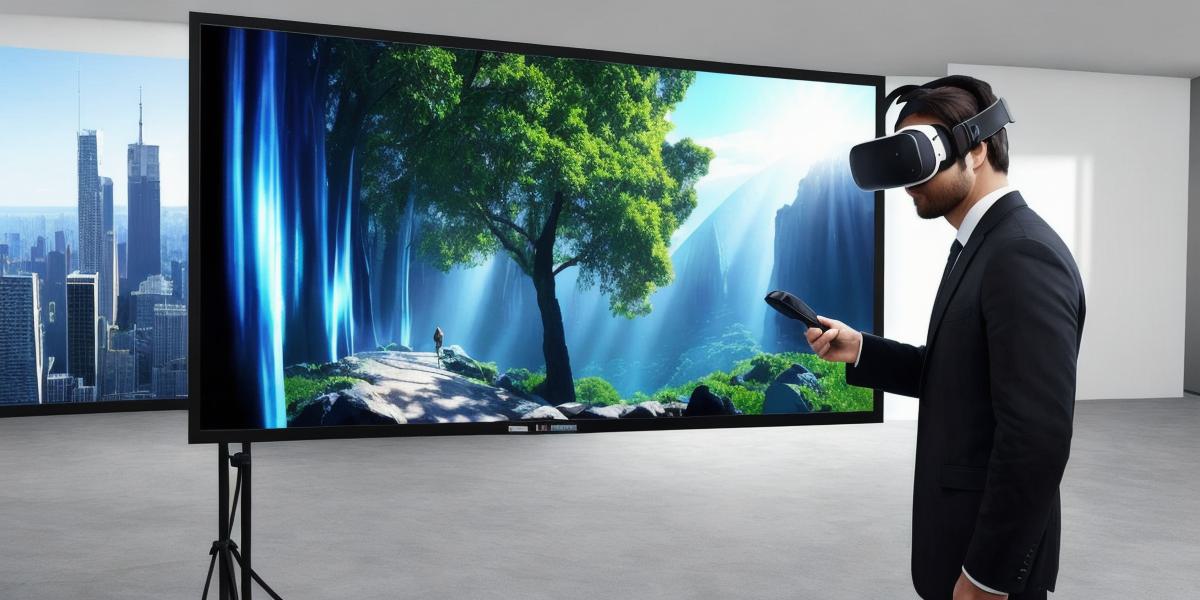Are you a simulated reality developer looking for new and innovative ways to engage your audience? Look no further than virtual reality (VR). VR is a rapidly growing technology that has the potential to revolutionize how we interact with digital content. In this article, we’ll explore the many advantages of VR and how you can use it to unlock the full potential of your simulated reality projects.
What is Virtual Reality?
Virtual reality is a computer-generated simulation of a 3D environment that can be experienced and interacted with through specialized devices such as headsets, gloves, and controllers. VR allows users to fully immerse themselves in a digital world, experiencing it as if they were really there.
Advantages of Virtual Reality
- Enhanced Engagement: VR offers an incredibly immersive experience that can capture the user’s attention and keep them engaged for extended periods. This makes it ideal for educational and training applications, as well as gaming and entertainment.
- Improved Learning: By allowing users to interact with digital content in a more realistic way, VR can enhance learning outcomes by providing a safer and more controlled environment for experimentation and practice.
- Increased Accessibility: VR technology is becoming more accessible and affordable, making it possible for people all over the world to experience and benefit from immersive digital content.
- Reduced Costs: VR can help businesses reduce costs by providing a more efficient and effective way to train employees, conduct research, and simulate real-world scenarios.
- Enhanced Creativity: VR allows developers to create entirely new and unique experiences that were previously impossible with traditional media. This opens up a whole new world of creative possibilities for simulated reality projects.
Real-life examples of Virtual Reality in action
One great example of the power of VR is the use of virtual reality therapy for patients suffering from PTSD, phobias, and anxiety disorders. By exposing patients to controlled and safe virtual environments, therapists can help them confront and overcome their fears in a way that traditional talk therapy cannot.
Another example is the use of VR in the field of architecture and design. Architects can use VR to create incredibly detailed and accurate simulations of their building designs, allowing clients to experience and interact with the designs in a way that was previously impossible.
FAQs
Q: Is virtual reality safe?
A: While there are some risks associated with VR, such as motion sickness and eye strain, these can be mitigated with proper training and precautions. Additionally, VR technology is constantly improving, making it safer and more accessible for everyone.
Q: How expensive is virtual reality equipment?
A: The cost of VR equipment varies depending on the level of immersion and complexity required. While high-end VR systems can be expensive, there are also many affordable options available for those looking to experiment with the technology.
Q: What industries are using virtual reality?
A: Virtual reality is being used in a wide range of industries, including education, healthcare, gaming, entertainment, architecture, and design. The possibilities for VR are nearly limitless, making it an exciting time to be involved in this rapidly growing technology.
Conclusion
Virtual reality has the potential to revolutionize the way we interact with digital content and unlock new and innovative ways to engage audiences. By embracing this technology, simulated reality developers can create more immersive, interactive, and effective experiences that will capture the imagination of users around the world. So why not take a leap of faith and explore the limitless potential of virtual reality today?
